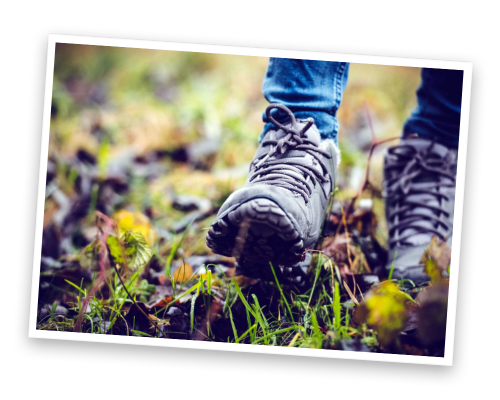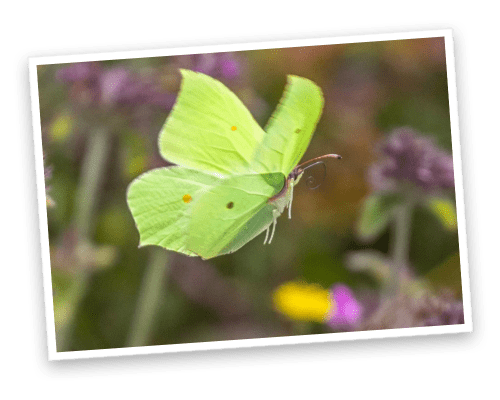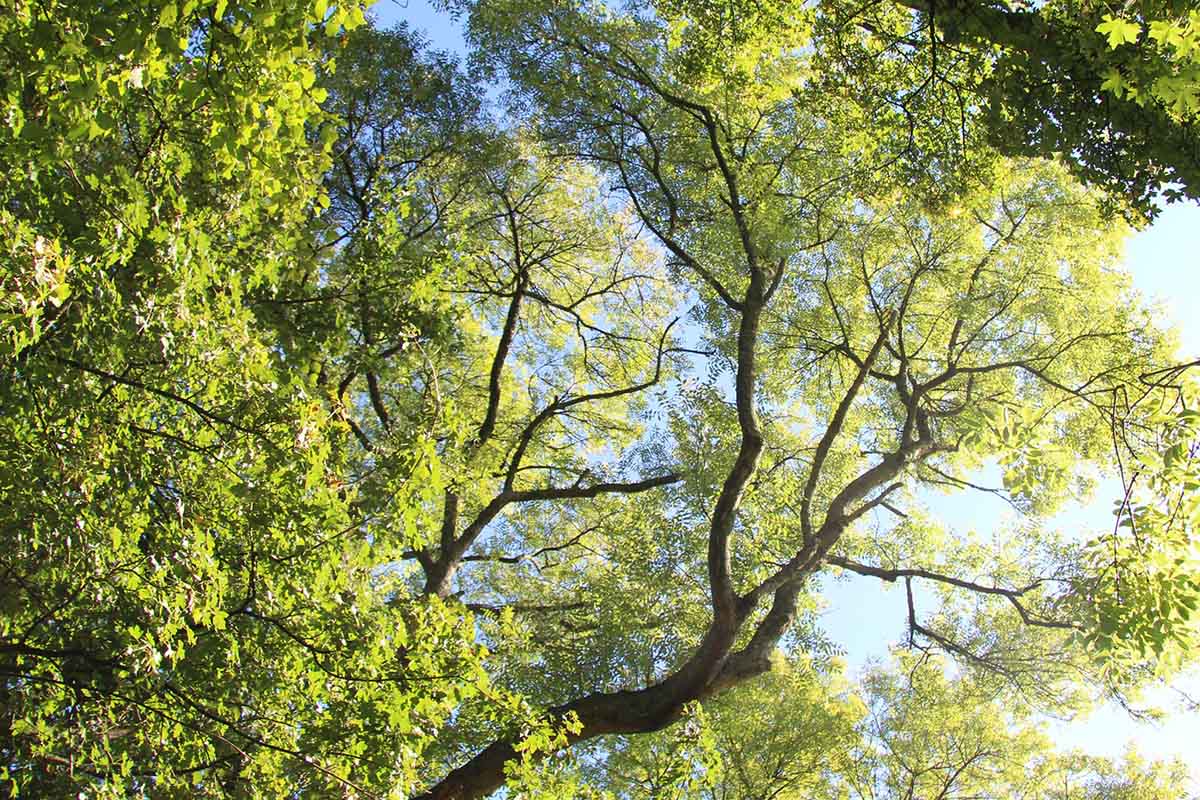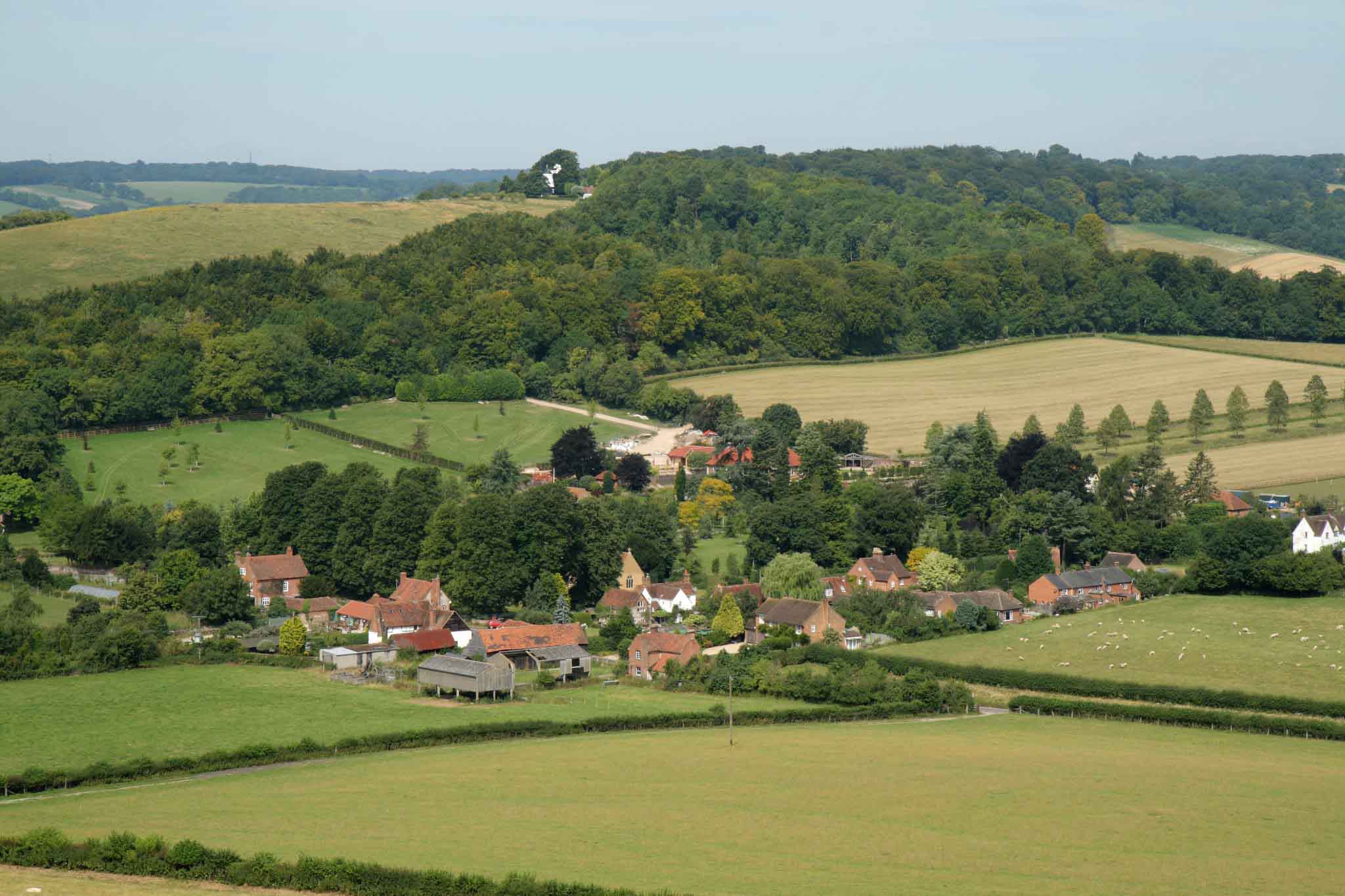We’ve enjoyed getting to know our new site and the local people over the past few months. With initial safety surveying of the trees on the common complete, and with autumn just upon us, we’re now planning for essential tree safety works to take place over the winter – the first step in our long-term ambition to safeguard the health and diversity of woodland on the common.
Upcoming works
We’re working closely with the Forestry Commission, Buckinghamshire Council and our own arboricultural consultant to agree an appropriate plan and to gain the necessary Felling Licence, Conservation Area consent and highways work licence.
The tree safety works will prioritise the ash dieback that has infected a large proportion of the ash trees on the common – approximately 350 trees – and the need for them to be removed for public safety and to help reduce the spread of the disease.
Priority will be given to those along the roadside, near properties and along footpaths (trees are marked with a red dot). There are other groups of infected ash on the common (unmarked) which will also be removed to help reduce the spread of the disease and to diversify the tree species. These trees are located in compartment 1c shown in the map.
Click on map to enlarge.
Upcoming works
We’re working closely with the Forestry Commission, Buckinghamshire Council and our own arboricultural consultant to agree an appropriate plan and to gain the necessary Felling Licence, Conservation Area consent and highways work licence.
The tree safety works will prioritise the ash dieback that has infected a large proportion of the ash trees on the common – approximately 350 trees – and the need for them to be removed for public safety and to help reduce the spread of the disease.
Priority will be given to those along the roadside, near properties and along footpaths (trees are marked with a red dot). There are other groups of infected ash on the common (unmarked) which will also be removed to help reduce the spread of the disease and to diversify the tree species. These trees are located in compartment 1c shown in the map.
Click on map to enlarge.
What to expect
Initially this essential work will have a significant visual impact. Longer term it will diversify the tree population on the common making it more ecologically diverse and resilient to future disease and climate change.
We’ll work closely with our contractor and will monitor progress as the work is taking place to ensure the work is undertaken as sympathetically as possible.
The work will take approximately 7-10 days and there’ll be restricted access along the main road for the duration of this period. Depending on ground conditions at the time of the work there may be some ground disturbance caused and re-instatement will be carried out where appropriate.
Our forestry contractor will use a combination of hand-held chainsaws and large forestry equipment to fell the trees, and stack the trunks and large branches for removal. However, there’ll be a large amount of smaller brash left on the common.
The Chiltern Society, with local volunteers, will tidy up the remaining brash. The brash can be used for a wide range of purposes, e.g., to create dead hedges for screening along the road, to create natural barriers to restrict unwanted access, or make habitat piles to encourage invertebrates and fungi. The best use of the brash can be agreed with the community.
Replanting
As part of our vision of enhancing the biodiversity of the site, and a condition of the felling licence, we’ll replant a mix of native broadleaved trees – wild cherry, small-leaved lime, common oak, field maple, hazel, hawthorn, silver birch, downy birch – at a rate of approximately 5 trees for every one removed.
Replanted trees will be small in size – survival rates are better for younger trees – and will be protected from damage from other animals, such as deer, with tree guards.
We’re required to undertake the replanting work within 2 years of the felling but we’d like to do this work as soon as the ground and weather conditions allow. There’ll be plenty of volunteering opportunities to get involved with this tree planting.
Looking ahead
Whilst this work will reduce the risk of unsafe trees significantly, we have a duty of care to carry out a tree safety survey of the common every 12-18 months to assess the condition of all the trees in high-risk areas. We’ll undertake any tree safety work highlighted in these surveys and also any adhoc work in the time between surveys.
Once this essential work is completed, we’ll continue developing a long-term management plan for the common, alongside the local community, the Forestry Commission and other ecology experts. We’ll think about the balance of woodland and open areas on the common to promote a diversity of habitats and species whilst also promoting appropriate access and enjoyment of the common for the local community.
We’re keen to build a local group of volunteers so we can work together in the delivery of the management plan on the common for many years to come.

However you choose to help us achieve our mission, together we can save this landscape for future generations

Donate
Taking on the Common will be costly to our charity. Whatever you can give will make a difference.

Volunteer
The people of the Chilterns are at the heart of our work. Join a work party on the Common.

eNews
Follow us on social media or sign up for our eNewsletter to stay in touch as we start working on the site.





